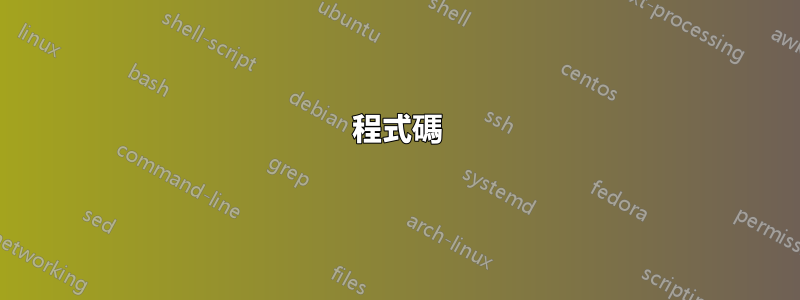
我想要一個多行方程式(最好甚至在適當的列上居中,因為我已經使用 [ 和 ] 或 $$ $$ 的單行方程式不居中)在 \newglossaryentry 的描述部分。
所以基本上我想要的是,以術語表列為中心,單行和多行方程式。
謝謝!
PS我想我可以從中得到一些東西:在此輸入連結描述 但我不能...
\documentclass[twoside]{amsbook}
\usepackage[colorlinks]{hyperref}
\usepackage[xindy,counter=section,sanitize={name=false},style=index]{glossaries} %[toc]% %\glstoctrue
\usepackage{nomencl}
\makeglossaries %has to be after \usepackage{hyperref}
%
\glossarystyle{long3col}
%\glossarystyle{super3col}
\setlength{\glsdescwidth}{0.6\textwidth}
\setlength{\glspagelistwidth}{0.15\textwidth}
\newglossaryentry{AffineVariety}
{
name=Affine Variety,
description={Affine varieties are defined to be anything that looks like the set of common zeros of a collection of polynomials. E.g., $A = \mathbb{C}[X]$ is the ring of polynomials in $X$ with complex coefficients. Let $f=X-1 \in A$ and its set of zeros, $Z(\{f\})=\{1\}$ is an example of an affine variety.}
}
\newglossaryentry{RemovableSingularity}
{
name=Removable Singularity,
description={Formally, if $U \subset \mathbb{C}$ is an open subset of the complex plane $\mathbb{C}$, and $a \in U$, and $f: U\backslash\{a\} \to \mathbb{C}$ a holmorphic function, then $a$ is a removable singularity for $f$ if there exists a holomorphic function $g: U \to \mathbb{C}$, coinciding with $f$ on $U\backslash\{a\}$. It is said that $f$ is holomorphically extended over $U$ if such a $g$ exists. A simple example is the function $$f(z) = \frac{\sin(z)}{z}$$ at $z=0$ (even this: \[f(z) = \frac{\sin(z)}{z}\] doesn't center.). The singularity, due to the indeterminate form, can be removed by defining $f(0)=1$, which is the limit of $f$ as $z$ approaches zero.}
}
\newglossaryentry{TetrahedralCoordinates}
{
name=Tetrahedral Coordinates,
description={Coordinates useful in plotting projective three-dimensional curves of the form $f(x_0,x_1,x_2,x_3)=0$, which are defined by
% \begin{minipage}[t][5cm][b]{0,5\textwidth}
% \ensuremath{
% $$ {\setlength\arraycolsep{0.2em} \begin{eqnarray} x_0 = 1-z-\sqrt{2}\,x \\ x_1 = 1 - z + \sqrt{2}\,x \\ x_2 = 1+ z+ \sqrt{2}\,y \\ x_3 = 1 + z - \sqrt{2}\,y \end{eqnarray} } $$
% \end{minipage}
% }
}
}
\makeglossaries
\begin{document}
Consider the equation
\begin{equation}
e = m * c^2
\end{equation}
in which \gls{AffineVariety} is here, but not here \gls{TetrahedralCoordinates} oh and this \gls{RemovableSingularity}.
\printglossary
\end{document}
答案1
將內容包裝在minipage環境中使得顯示的數學能夠在longtable環境中居中。但每次都這樣做會很乏味、不靈活且容易出錯。
更好的選擇是使用包\newcolumntype的命令array為表格環境設定新的列類型,然後我們可以使用它來定義新的術語表樣式my3col.此樣式將基於long3col但具有變更的描述列類型。
我之前已加載glossaries,因此\glsdescwidth在定義新列類型時可用。這又是在設定將使用它的新術語表樣式之前定義的。最後,新樣式被啟動。
程式碼
\documentclass[twoside]{amsbook}
\usepackage[colorlinks]{hyperref}
\usepackage[xindy,counter=section,sanitize={name=false},style=index]{glossaries} %[toc]% %\glstoctrue
\usepackage{nomencl}
\setlength{\glsdescwidth}{0.6\textwidth}
\setlength{\glspagelistwidth}{0.15\textwidth}
\usepackage{array}
\newcolumntype{G}{% This is defining a new column type for tabulars which we will use to define the longtable environment in the new glossary style
>{\begin{minipage}[t]{\glsdescwidth}}{c}<{\end{minipage}}%
}
\newglossarystyle{my3col}{% call that style my3col
\setglossarystyle{long3col}% base it on long3col so we don't need to define the everything from scratch
\renewenvironment{theglossary}% here's the bit we want to alter
{\begin{longtable}{lGp{\glspagelistwidth}}}% just change the central column to our new column type, G
{\end{longtable}}}
\glossarystyle{my3col}% we want to use the new style!
\makeglossaries %has to be after \usepackage{hyperref}
\newglossaryentry{AffineVariety}
{
name=Affine Variety,
description={Affine varieties are defined to be anything that looks like the set of common zeros of a collection of polynomials. E.g., $A = \mathbb{C}[X]$ is the ring of polynomials in $X$ with complex coefficients. Let $f=X-1 \in A$ and its set of zeros, $Z(\{f\})=\{1\}$ is an example of an affine variety.}
}
\newglossaryentry{RemovableSingularity}
{
name=Removable Singularity,
description={Formally, if $U \subset \mathbb{C}$ is an open subset of the complex plane $\mathbb{C}$, and $a \in U$, and $f: U\backslash\{a\} \to \mathbb{C}$ a holmorphic function, then $a$ is a removable singularity for $f$ if there exists a holomorphic function $g: U \to \mathbb{C}$, coinciding with $f$ on $U\backslash\{a\}$. It is said that $f$ is holomorphically extended over $U$ if such a $g$ exists. A simple example is the function
\[f(z) = \frac{\sin(z)}{z}\]
at $z=0$ (even this:
\[f(z) = \frac{\sin(z)}{z}\]
doesn't center.). The singularity, due to the indeterminate form, can be removed by defining $f(0)=1$, which is the limit of $f$ as $z$ approaches zero.}
}
\newglossaryentry{TetrahedralCoordinates}
{
name=Tetrahedral Coordinates,
description={Coordinates useful in plotting projective three-dimensional curves of the form $f(x_0,x_1,x_2,x_3)=0$, which are defined by
\begin{gather*}
X_0 = 1-Z-\sqrt{2}\,X \\
X_1 = 1 - Z + \sqrt{2}\,X \\
X_2 = 1+ Z+ \sqrt{2}\,Y \\
X_3 = 1 + Z - \sqrt{2}\,Y
\end{gather*}
}
}
\begin{document}
Consider the equation
\begin{equation}
e = m * c^2
\end{equation}
in which \gls{AffineVariety} is here, but not here \gls{TetrahedralCoordinates} oh and this \gls{RemovableSingularity}.
\printglossary
\end{document}
輸出

筆記
- 您不需要
\makeglossaries在序言中出現兩次。 $$...$$已棄用,不應使用。\[...\]例如,使用來代替。


